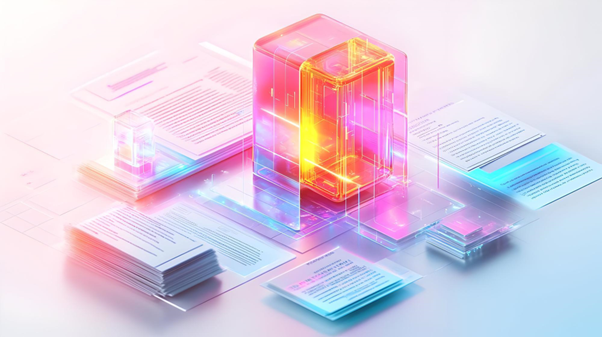
In today's digital world, documents are everywhere — contracts, reports, invoices, forms, emails, and more. Manually reading and analyzing them takes time and effort. That’s where AI for document analysis comes in. It helps people and businesses understand and manage large volumes of information quickly and accurately.
Whether you're curious about how it works or wondering if it can help your work, here’s a simple breakdown.
What Is Document Analysis?
Document analysis means looking at a document to understand what it says and what it means. This can include:
Reading the text
Finding key information
Sorting documents by type or topic
Checking for errors or missing parts
Extracting names, dates, or numbers
In the past, people had to do this by hand. Now, artificial intelligence (AI) can do much of it automatically.
How AI Helps with Document Analysis
AI can "read" documents using a combination of technologies. Here's what it usually involves:
Optical Character Recognition (OCR)
AI turns scanned images or photos of documents into digital text, so the computer can read it.
Natural Language Processing (NLP)
AI understands the meaning of the words, sentences, and context.
Machine Learning (ML)
AI learns from examples. The more documents it analyzes, the better it becomes at recognizing patterns.
Classification and tagging
AI can group documents by type (e.g., invoices, resumes, contracts) and tag important fields automatically.
Information extraction
AI pulls out specific data, such as names, dates, totals, or legal terms, and puts them into a structured format.
Common Uses of AI for Document Analysis
AI isn’t just for big tech companies — it’s being used in many everyday areas:
1. Business and finance
Reviewing contracts
Sorting and checking invoices
Monitoring reports for errors or missing data
2. Healthcare
Reading medical records
Extracting patient information
Matching cases or prescriptions
3. Government and law
Analyzing legal documents
Reviewing policies or regulations
Processing immigration or tax forms
4. Education and research
Organizing large archives
Summarizing research papers
Checking for plagiarism or repeated content
Benefits of Using AI for Document Analysis
There are several good reasons to use AI tools for this kind of work:
Speed: AI can analyze thousands of documents in minutes.
Accuracy: AI reduces human error, especially in repetitive tasks.
Consistency: Every document is treated the same way, with no skipping or guessing.
Cost-saving: Less manual work means more time for high-value tasks.
Scalability: AI can handle growing amounts of data without needing extra hands.
Challenges and Things to Watch Out For
AI is powerful, but it’s not perfect. Some challenges include:
Poor-quality scans or handwriting — Hard for AI to read without clean input
Unusual formats — Custom templates or rare document types may confuse the system
Language variety — Slang, legal jargon, or technical terms need special training
Data privacy — Sensitive documents must be handled securely
That’s why it’s important to double-check the results — especially when the information is critical.
Tips for Getting Started
If you’re thinking about using AI for document analysis in your work or studies, here’s how to begin:
Start with a goal — Do you want to extract data, summarize, or sort documents?
Choose clean inputs — Good-quality scans and clear formats give better results.
Use labeled examples — If training your own model, give it examples of what to look for.
Test with small batches — See how it performs before scaling up.
Review and refine — Correct any mistakes so the system learns and improves.
AI gets better over time — especially when it’s guided by human feedback.
Smarter Ways to Work with Information
AI for document analysis is not about replacing people — it’s about helping them. With the right setup, it can handle repetitive tasks, free up time, and make large volumes of text easier to understand.
As more of the world’s knowledge is stored in documents, using AI to work with them isn’t just a trend — it’s becoming a key skill for the future.